Some of the most significant firearm related information I’ve encountered came with the purchase of a spiral bound copy of Ackley’s “Handbook for Shooters and Reloaders”. Originally published in 1959, my copy was a 1961 10th printing. I was fifteen years of age; five years a shooting enthusiast, three years deep into reloading and in search of a broader perspective on firearms. Ackley’s approach was technical, nuts and bolts, cause and effect and open to a creative process. His wildcat and improved cartridges live on today in many forms.
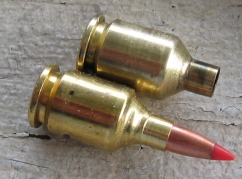 Ackley did quite a bit of work with .17 caliber wildcats. The term wildcat applies rather than improved because necking down and significant fire forming does not permit their use in a standard cartridge chamber. Whereas an improved cartridge can be fired in a parent cartridge chamber, and typically is as a method to use chamber pressure to blow out body taper and to sharpen shoulder angles. Ackley’s contributions to the .17 caliber are: .17 Ackley Bee, .17 Ackley Improved Bee, .17 Ackley Hornet, .17/221. Following Ackley’s .17 Improved Bee in “Cartridges of the World” is my own .17-357 RG. Ackley’s wildcats are not only good performers, but easy to form and load. Whereas my approach is to five step neck down, inside/outside neck reaming and fire forming a 357 Sig case to .17 caliber. Wise to pack a lunch and plan to stay awhile. Pictured left, 17-357RG loaded before fire forming and fire formed case ready for final loading.
Ackley did quite a bit of work with .17 caliber wildcats. The term wildcat applies rather than improved because necking down and significant fire forming does not permit their use in a standard cartridge chamber. Whereas an improved cartridge can be fired in a parent cartridge chamber, and typically is as a method to use chamber pressure to blow out body taper and to sharpen shoulder angles. Ackley’s contributions to the .17 caliber are: .17 Ackley Bee, .17 Ackley Improved Bee, .17 Ackley Hornet, .17/221. Following Ackley’s .17 Improved Bee in “Cartridges of the World” is my own .17-357 RG. Ackley’s wildcats are not only good performers, but easy to form and load. Whereas my approach is to five step neck down, inside/outside neck reaming and fire forming a 357 Sig case to .17 caliber. Wise to pack a lunch and plan to stay awhile. Pictured left, 17-357RG loaded before fire forming and fire formed case ready for final loading.
What is the purpose of a .17 caliber rifle? While I am sure someone has attempted to shoot an elephant with a 17 caliber cartridge, just like some people go to Vegas to see Wayne Newton, elephant hunting would not be considered a primary application. The .17 caliber cartridge, by limitations of bullet density, mass and construction, are for varmint hunting; bigger than a field mouse, no bigger than a coyote, inside 200 yards. Again, I am sure someone has attempted a 1,000 yard shot at a running cape buffalo, but lets just live in my world for a while. For the most part, most .17 caliber cartridges have modest case capacity and modest bore volume so they would not be considered thunderous in report.
More specifically, the case for the .17 WSM
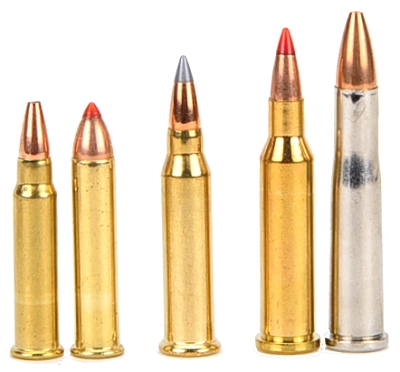 Setting aside the 17 HM2, the 17 Remington Fireball and the 17 Remington because…. well, just about everyone else has, AND setting aside cartridges only available through handloading, three .17 caliber cartridges currently define the .17 caliber power spread. Pictured above, along side each respective parent cartridge, are: 17 HMR, parent 22 WMR, 17 WSM, 17 Hornet, parent 22 Hornet. Why is the 17 WSM alone on stage? The 17 WSM’s parent case is a .27 caliber nail gun blank and I only has .22 caliber handy.
Setting aside the 17 HM2, the 17 Remington Fireball and the 17 Remington because…. well, just about everyone else has, AND setting aside cartridges only available through handloading, three .17 caliber cartridges currently define the .17 caliber power spread. Pictured above, along side each respective parent cartridge, are: 17 HMR, parent 22 WMR, 17 WSM, 17 Hornet, parent 22 Hornet. Why is the 17 WSM alone on stage? The 17 WSM’s parent case is a .27 caliber nail gun blank and I only has .22 caliber handy.
| Cartridge | Bullet Grains |
Muzzle FPS |
200 Yard FPS |
100 Yard Zero 200 Yard Drop |
Typical Cost Per 50 Rounds |
| .17 HMR | 20 | 2375 | 1304 | -9.9 | $12 |
| .17 WSM | 20 | 3000 | 2060 | -4.4 | $16 |
| .17 Hornet | 20 | 3650 | 2574 | -2.2 | $40 |
There are probably enough points of information to arrive at a logical conclusion, based on personal circumstances. The .17 HRM probably has enough steam at 200 yards to drop a woodchuck, but I would not want to take a run at a coyote. The .17 WSM really picks up the pace, shoots flatter, retains significantly greater kinetic energy at a distance and is less subject to wind deflection. The .17 Hornet is smoking along at 200 yards with the velocity of the .17 HMR at the muzzle. Is the .17 WSM worth $4 more per box than the .17 HMR? Probably for most as a surety of kill. Would the .17 Hornet be better yet? Sure, but what about cost?
I am at a station in life… or perhaps more accurately a substation in life, where paying 3X the price of comparable ammo is noticeable. So looking at the .17 WSM and .17 Hornet, would a woodhuck notice the difference in velocity? Am I really such a lazy guy that I can’t lift a rifle barrel up slightly to offset 2.2″ in drop rather than spend all of that extra cash on the .17 Hornet? What about the reloadable feature of the Hornet? Well, I can get ten reloads out of a .17 Hornet case and each reload cost 20¢ per cartridge. So the cost over 550 rounds, in 50 round increments looks like this $40, $10, $10, $10, $10, $10, $10, $10, $10, $10, $10 = $140 or 25¢ per round. The cost for 550 rounds of .17 WSM is $176 or 32¢. So the .17 Hornet is 22% less expensive to shoot than the .17 WSM, but only if you are a handloader and take into consideration 17 Hornet specific tool amortization and value your labor at roughly a couple of bucks an hour. No, that is not a cheap shot at handloading, I do it all of the time.
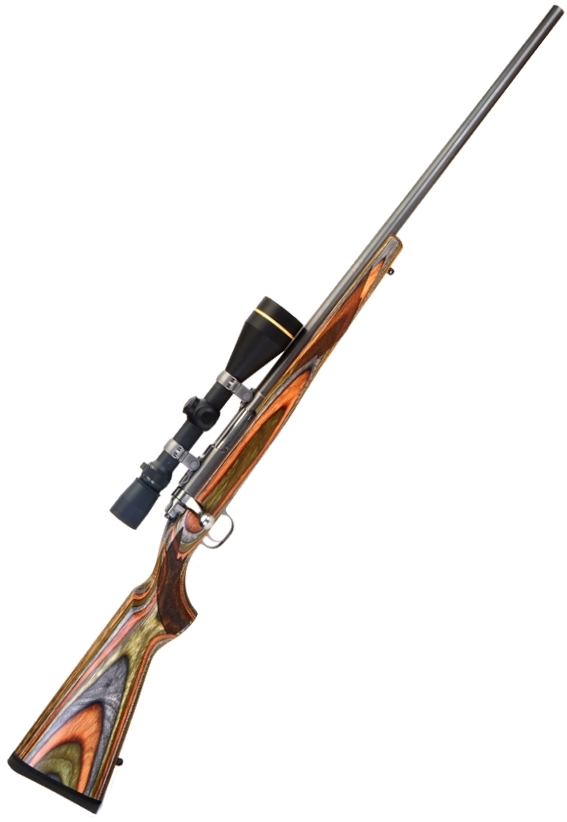
 My favorite .17 Hornet is the Ruger 77 Series 77/17 17 Hornet, with a 24″ barrel to maximize the use of the round’s powder capacity and a heavy profile barrel to better deal with heat and vibration. Unfortunately lots of people do not handload, either as a result of expense or time… or both, so the .17 WSM makes for a more than reasonable 17 caliber alternative.
My favorite .17 Hornet is the Ruger 77 Series 77/17 17 Hornet, with a 24″ barrel to maximize the use of the round’s powder capacity and a heavy profile barrel to better deal with heat and vibration. Unfortunately lots of people do not handload, either as a result of expense or time… or both, so the .17 WSM makes for a more than reasonable 17 caliber alternative.
Ruger currently produced two different types of rifles for the 17 WSM. The first is the 77 Series Ruger 77/17 Model 7216 with 24″ barrel, walnut stock and heavy stainless steel barrel and action. It weighs 7.5 Lbs. The second 17 WSM in the Ruger line up is the subject rifle, pictured left and defined in table form below.
|
Ruger® 77 Series 77/17® Rotary Magazine Rifle |
|
| Manufacturer | Sturm, Ruger & Co., Inc. |
| Model # |
7217 |
| Type | Bolt Action |
| Caliber | .17 Hornet |
| Detachable Magazine | 6 shot |
| Barrel Length | 20″ Sporter |
| Rifling | 1:9″ |
| Weight | 5.7 Lbs |
| Overall Length | 39.25″ |
| Stocks | American Walnut |
| Hardware | Alloy Steel |
| Length of Pull | 13.50″ |
| Sights | Clean |
| Scope Mount | Ruger Rings Included |
| Trigger Pull | 5 Lbs. 9 Oz. |
| Safety | Thumb – Three Position |
| MSRP | $999 |
The 24″ version offers enhanced performance…. velocity, but being the centerfire handloading snob that I am, I see the 24″ barrel as an attribute that better serves the 17 Hornet. I do see a really terrific combination in the 5 pound 20″ barrel and the 17 WSM rimfire. Yes, I do like the combination of American walnut and blued steel as there are too few nicely done rimfire rifles these days.
Ruger’s use of the 77 Series action for this cartridge is a smart move. Where other manufacturers have had problems as a result of combining traditional rimfire actions with the 17 WSM’s 33,000 PSI chamber pressure, Ruger’s approach was to utilize their compact short action that comfortably handles the 36,000 PSI, centerfire 44 Magnum.
Rather than a rimfire’s grooved receiver, the 77 Series 77/17 utilizes the proprietary ring system. The rings are clamped into scalloped recesses in the sides of the receiver and keyed into a recess in the top of the receiver. Steel rings are supplied with the rifle. There are three positions to secure rings that are spaced to facilitate the use of long and compact scopes.
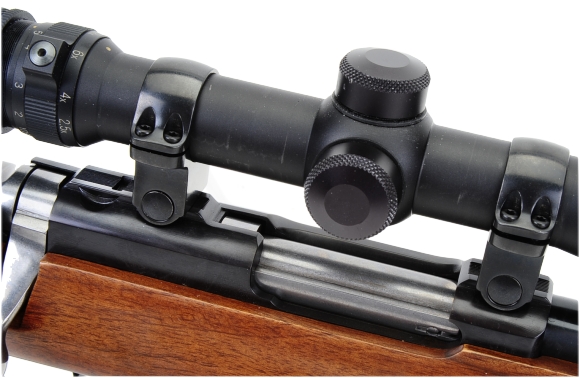
The 77 Series short action in its accommodation of what is typically a centerfire handgun cartridge, dispenses with size overhead that would be required to accommodate longer centerfire rifle cartridges. The result is no loss of strength, but a reduction in weight and a faster lock time in comparison to even a mini Mauser action.
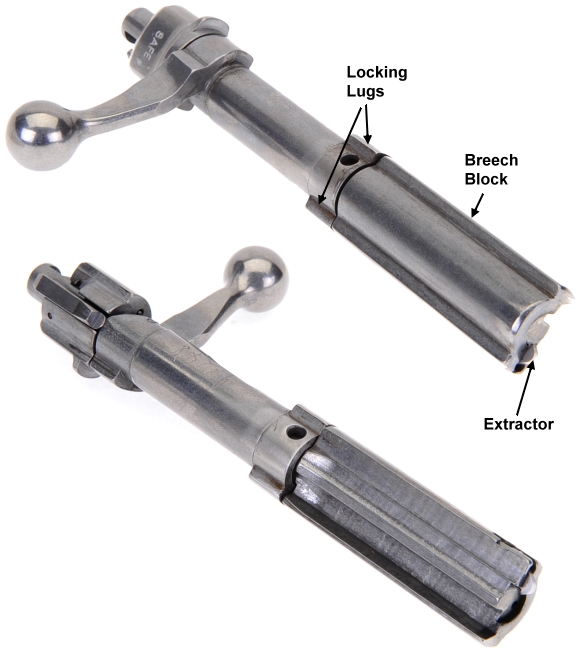
The Ruger 77 Series has a stainless steel bolt assembly, twin locking lugs for a 90° bolt lift and a single hook extractor. The breech block is non-rotating and acts as a bolt guide to provide very smooth operation. The extractor is a fixed post, integral to the assembly that supports the rear of the rotary magazine. Subsequently, force of ejection is proportional to the speed of opening the bolt. The same bolt is used for all 77 Series chambers with the breech block unique to each caliber.
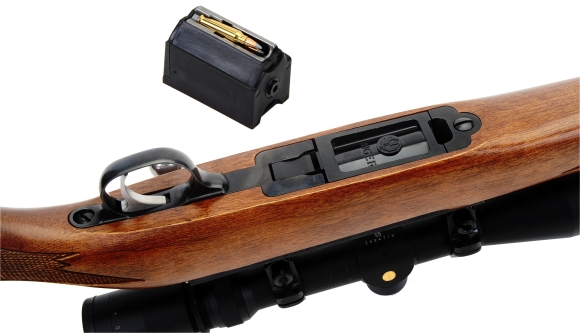
The rotary magazine used in the Ruger 77 Series rifles is a good design. The design allows greater storage in less depth, six rounds in this case, so it fits flush to the stock. The catch mechanism is positive, locking and releasing, easy to actuate, but out of the way.
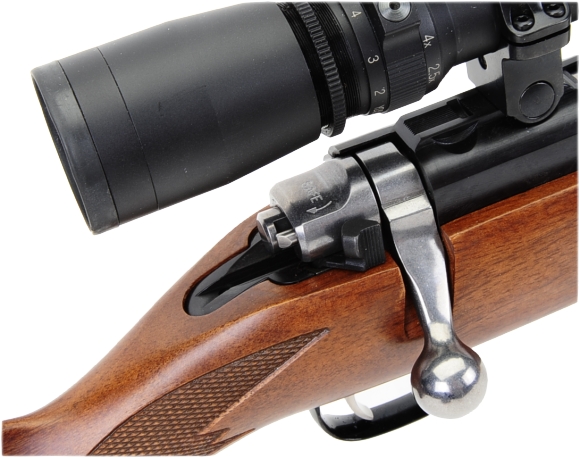
The three position safety, beyond allowing the rifle to fire when in the off position, has an interim safe position that allows the bolt to be cycled to empty the chamber and a full safe position where the safety fits into a groove in the striker assembly, blocks its movement and locks the bolt in battery.
A bit more… with ammunition
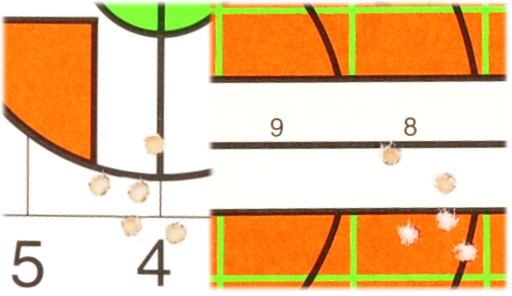
The test barrel length for the 17 WSM is 24″ and the standard used for Winchester factory ammunition. The fall off with the Ruger’s 4″ shorter barrel was relatively minor. For folks who don’t spend much time shooting .17 caliber bullets, a drop of 400 fps over 5 grains of bullet weight might seems exceptional, but it really isn’t. As a 25% increase in bullet weight, it is the equivalent of raising .30 caliber bullet weight from 165 grains to over 200 grains.
| 17 Winchester Super Mag | Bullet Type |
Bullet Grains |
Rated FPS |
Recorded FPS |
100 Yard 5 Shot Group “ |
| Winchester Varmint HE |
Poly Tip | 20 | 3000 | 2999 | 0.7 |
| Winchester Varmint HE | Poly Tip |
25 | 2600 | 2532 | 1.0 |
Combination’s performance…
The Ruger 77 Series Model 77/17 17 WSM… has a really long name. Probably of greater importance, it has excellent balance and its light weight make it fast handling. Clearly, in the presence of only mild report and the total absence of felt recoil, it was fun to shoot all day. The action is slick, the accuracy is good and the reach covers 98% of most circumstances. The look and feel are good, the Ruger quality is excellent and the rifle is put together to last. If I were being picky, I would clean up the trigger and get the pull closer to 3 1/2 lbs which is a relatively simple fix. To a more important point, the Ruger 77 Series 77/17 17 WSM would make a terrific rimfire legacy rifle to keep in the family.

Email Notification